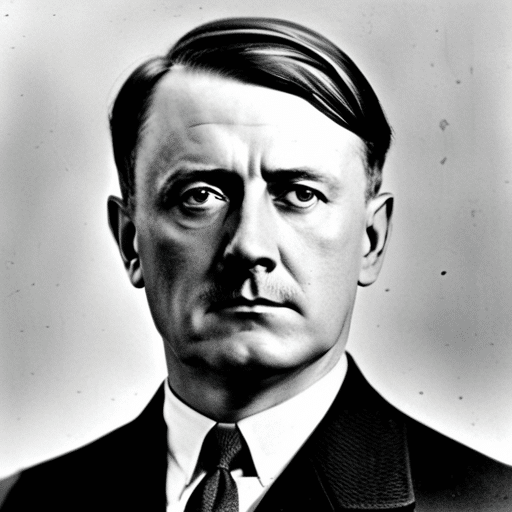Table of Contents
Introduction
Adolf Hitler, the infamous dictator who led Nazi Germany during World War II, has become synonymous with the horrors of the Holocaust and the ravages of war. Amidst the countless discussions and debates surrounding his life and actions, one seemingly innocuous question has persisted: how tall was Hitler? In this article, we will explore not only his height but also its possible significance in the context of history, psychology, and public perception.
Early Life
Born on April 20, 1889, in Braunau am Inn, Austria-Hungary, Adolf Hitler had a tumultuous childhood marked by the strict upbringing of his father, Alois, and the doting love of his mother, Klara. These early experiences would go on to shape the man who would eventually rise to power in Germany and plunge the world into a devastating conflict.
Rise to Power

Hitler’s ascent to power began in the early 1920s, as he joined the German Workers’ Party and quickly became one of its leading figures. With his oratory skills and charismatic persona, he was able to rally support for the fledgling Nazi Party, eventually seizing control of the German government in 1933.
Physical Appearance
Much has been said about Hitler’s physical appearance, including his iconic mustache, slicked-back hair, and often stern expression. But what about his height?
How Tall Was Hitler?
Historical records indicate that Hitler’s height was approximately 5 feet 8 inches (173 cm) tall. While this is a relatively average height for a man, it is worth noting that it was somewhat below the average height for German men at the time, which was around 5 feet 9 inches (175 cm).
Measuring Height in Inches
To better understand Hitler’s height in relation to the imperial system, we can convert his height from centimeters to inches. One inch is equivalent to 2.54 cm, so we can calculate Hitler’s height in inches by dividing 173 cm by 2.54 cm/inch, which results in approximately 68 inches.

Comparing Heights
When comparing Hitler’s height to other prominent figures in history, we can see that his stature was relatively unremarkable. For example, Napoleon Bonaparte was reportedly 5 feet 2 inches (157 cm) tall, while Abraham Lincoln towered over most at 6 feet 4 inches (193 cm).
Importance of Height in History
Throughout history, height has often been associated with power, authority, and leadership. Societal norms have sometimes placed greater value on taller individuals, equating height with strength and dominance. This notion has even carried over into modern times, with studies suggesting that taller individuals are more likely to be perceived as leaders or receive promotions in the workplace.

Height and Leadership
While height may play a role in the perception of leadership qualities, it is important to recognize that it is not the sole determining factor. Other traits, such as charisma, intelligence, and the ability to inspire and motivate others, are equally crucial in determining a person’s capacity for leadership. In the case of Hitler, his oratory skills and ability to tap into the fears and desires of the German people played a far more significant role in his rise to power than his physical stature.
Other Famous Leaders and Their Heights
Throughout history, there have been numerous examples of leaders who have defied the stereotype that taller individuals make better leaders. Some of these figures include:
- Mahatma Gandhi (5 feet 5 inches / 165 cm)
- Winston Churchill (5 feet 6 inches / 168 cm)
- Joseph Stalin (5 feet 5 inches / 165 cm)
- Martin Luther King Jr. (5 feet 7 inches / 170 cm)
These examples demonstrate that leadership is not solely determined by physical height but rather by a combination of personal traits, abilities, and circumstances.
Psychological Implications
The fascination with Hitler’s height may be rooted in a deeper psychological need to understand the man behind the atrocities he committed. By fixating on his physical attributes, we attempt to humanize him, seeking explanations for his actions and motives. While this is a natural human instinct, it is important to remember that height alone does not determine a person’s character or capacity for evil deeds.
The Napoleon Complex
The term “Napoleon Complex” refers to the idea that shorter individuals may overcompensate for their height by exhibiting aggressive or domineering behavior. Although this theory has been widely debunked by psychologists, it is still frequently used in popular culture to describe individuals who are perceived as being power-hungry or seeking to assert their authority. In the case of Hitler, it is crucial to recognize that his actions were driven by a complex set of factors, including his personal beliefs, ambitions, and the political and social climate of the time, rather than a simple desire to compensate for his height.
Impact on Public Perception
Ultimately, the focus on Hitler’s height may serve to distract from the larger issues surrounding his life and actions. By examining his height in relation to his deeds, we risk trivializing the atrocities committed under his rule and reducing them to mere physical characteristics. It is essential that we continue to study and understand the complex historical context and motivations that led to the rise of the Nazi regime and the horrors of the Holocaust.
Conclusion
In conclusion, Adolf Hitler’s height, while an interesting aspect of his physical appearance, does not offer any real insight into his character or motivations. Instead, it serves as a reminder that we should focus on understanding the historical context, personal beliefs, and social factors that contributed to his rise to power and the devastating consequences that followed. By doing so, we can work towards ensuring that such atrocities are never repeated.
FAQs
Q: How tall was Adolf Hitler?
A: Adolf Hitler was approximately 5 feet 8 inches (173 cm) tall.
Q: How does Hitler’s height compare to other leaders in history?
A: Hitler’s height was relatively average and unremarkable when compared to other prominent historical figures.
Q: Is height a significant factor in determining a person’s leadership abilities?
A: While height may influence the perception of leadership qualities, it is not the sole determining factor. Other traits, such as charisma, intelligence, and the ability to inspire and motivate others, are equally crucial in determining a person’s capacity for leadership.
Q: What is the Napoleon Complex?
A: The Napoleon Complex is a term used to describe the idea that shorter individuals may overcompensate for their height by exhibiting aggressive or domineering behavior. However, this theory has been widely debunked by psychologists and should not be used to explain the actions of historical figures like Hitler.
Q: Why is there a fascination with Hitler’s height?
A: The fascination with Hitler’s height may be rooted in a deeper psychological need to understand the man behind the atrocities he committed. By fixating on his physical attributes, we attempt to humanize him and seek explanations for his actions and motives.






